C.Barnes Bristol Aircraft since 1910 (Putnam)
The Bristol-Prier Monoplanes
Pierre Prier was an experienced Bleriot pilot and a qualified engineer, who made the first non-stop flight from London to Paris on 12 April, 1911, while he was chief-instructor of the Bleriot school at Hendon. He was keen to design aeroplanes to his own ideas and found the opportunity to do so when invited to join the British and Colonial Aeroplane Company's staff in June. He at once undertook the design of a fast single-seat monoplane to compete in the annual Gordon Bennett Cup race, at Eastchurch on 1 July, when it was to be flown by Graham Gilmour. In spite of all efforts, this monoplane, Type P-1, No. 46, could not be completed in time for the race, but two more (Nos. 56 and 57), of almost identical design but with overhung engine mountings, were put in hand for the Circuit of Britain competition, in which they were to be flown, respectively, by Prier himself and Oscar Morison. Unfortunately Prier crashed No. 56 on the morning of the race and meanwhile Morison injured his eye, so the Prier monoplane's debut had again to be postponed. The P-1 had a 50 h.p. Gnome engine and Bleriot-type warping wings; its undercarriage had sprung skids, and the tail unit comprised a balanced rudder and a single balanced elevator without any fixed surfaces. The designed top speed of 70 m.p.h. was achieved without difficulty, and the next development was to produce a useful two-seater version. The first of these, No. 58, was the prototype of a successful series of military and training monoplanes, which were produced in some numbers during 1912 and followed the Boxkite into service in military flying schools in Spain, Italy and Germany as well as at Larkhill, Brooklands and the Central Flying School. The single-seat version was also developed as a low-powered runabout for advanced solo pupils, for which purpose it was fitted with a three-cylinder Anzani radial engine of 35 h.p. Nos. 46 and 57 were the first to be so converted, and one new single-seater, No. 68, was built to the same standard. It was intended to install a 40 h.p. Clement Bayard flat-twin engine in No. 57 at a later date, but this engine shed its airscrew while being run on test, causing severe head injuries to Herbert Thomas which nearly proved fatal. No. 56 retained its Gnome engine, and was acquired, after repairs, by James Valentine, who flew it on a cross-country flight to qualify for one of the first Superior Certificates granted by the Royal Aero Club. In November 1911 he fitted it with a 40 h.p. Isaacson radial engine for entry in the British Michelin Cup no. 2 competition, which was restricted to all-British aircraft and pilots.
Prier and Valentine flew the two-seater, No. 58, extensively during September and October 1911 and satisfied the Directors that it was suitable for quantity production with a good prospect in foreign markets. A batch of six, Nos. 71-76, was laid down and the first was specially finished for exhibition at the Paris Salon de l'Aeronautique in December 1911, where it was the sole British representative. All steel parts were burnished and 'blued' to resist rust, aluminium panels were polished to mirror finish and the decking round the cockpits and the wing tread-plates were panelled in plywood. The seats were suspended on wires and, like the cockpit rims, were upholstered in pigskin. A cellulose acetate window was fitted in the sloping front bulkhead to give the passenger a downward view and a sketching board, map case and stowages for binoculars and vacuum flask were also provided. Each cockpit had a Clift compass and the cowling was extended well over the engine to prevent oil being thrown back. A speed of 65 m.p.h. was guaranteed and the price quoted was Fr. 23,750 (about ?950). No. 71 was dispatched from Filton to Paris on 10 December 1911 and No. 72 was shipped to Cuatros Vientos for demonstration to the Spanish Army on 19 December. No. 73 had been sent incomplete to Larkhill in November as a replacement for No. 58 which had crashed on 30 October and No. 74 was rushed out to Issy-les-Moulineaux on 22 December, just before the Filton works closed for Christmas. So when the Paris Salon opened, visitors who had been impressed by the appearance of No. 71 were further delighted by seeing Valentine flying No. 74 round the Eiffel Tower. Valentine was in constant demand for further demonstrations, and on 2 January 1912 made a spectacular arrival with a passenger at St. Cyr in appalling weather just before dusk. A few days later, flying with Capt. Agostini of the Italian Army as passenger, Valentine found his landing baulked by troops, after a long glide with engine off. Unable to restart, he had to swerve through the top of a tree to find a clear space for landing, but, although a branch was carried away, only minor damage resulted. Capt. Agostini was so impressed by this evidence of sturdy construction that an order for two monoplanes arrived from the Italian Government before the end of the week.
Howard Pixton, who had gone to Madrid to demonstrate No. 72, was faced with a more formidable task than Valentine, for Cuatros Vientos is 3,000 ft. above sea level and the Spanish army tests included landing on and taking-off from a freshly ploughed field. The only other competitor, a German, declared this feat to be impossible, and Pixton, too, was worried about the loss of power at this altitude. Then Busteed arrived on Boxkite No. 60 and made short work of the ploughed field test and subsequently both machines were demonstrated to King Alfonso and his staff; the Spanish Government then adopted Bristol aeroplanes as standard equipment for its School of Military Aviation, both aircraft were purchased and two more Prier monoplanes and a further Boxkite were ordered.
When the Spanish trials ended Pixton was summoned to Doberitz, near Berlin, to demonstrate No. 74, which had been shipped to Germany when Valentine returned from Paris. Pixton flew the machine several times before German staff officers at Doberitz and once before the Kaiser at Potsdam. Once when Pixton was challenged by a Rumpler pilot to fly in very gusty conditions he easily out-manoeuvred his rival, but misjudged his height and touched down at high speed, bounced high and then landed safely. Frank Coles, Pixton's mechanic, remarked that this was a test of the undercarriage and was able to warn Pixton before he had time to apologise for an error of judgment, but later a German pilot tried to do the same and came to grief. These demonstrations marked the formation of the Deutsche Bristol-Werke and its associated flying school at Halberstadt, to which No. 74 was handed over on 30 March 1912.
Meanwhile, on 11 January, the War Office had ordered a Prier monoplane for the Army Air Battalion, and on 17 February Lt. Reynolds took delivery of No. 75 at Larkhill. It was generally similar to No. 71 but had a strengthened rudder post and a cane tail skid with an aluminium shoe on the end. Like all Prier monoplanes, it was fitted with a Rubery Owen quick-release catch which could be attached to a rope and picket before starting and released from the cockpit, thus dispensing with wheel chocks and the helpers who were always liable to damage the floating elevator. The last of the initial batch, No. 76, was a two-seater like the others, but was equipped for alternative use as a long-range single-seater, with a combined auxiliary fuel and oil tank to fit the front seat and a waterproof cover for the front cockpit. No. 76 was delivered to the Italian Government on 4 April, and a similar machine from the second production batch, No. 84, followed on 1 June.
The second batch of Prier monoplanes (Nos. 81-98) comprised both single-seaters and two-seaters, and several of the latter were an improved model introduced by Capt. Dickson, having a fixed tailplane and a hinged elevator and the fuselage lengthened by 30 in. The first of this Prier-Dickson type was No. 82, which was sent to Larkhill on 27 July 1912 and proved very successful. No. 81 was a single-seater with Anzani engine similar to No. 68 and was sent to Spain in April, together with No. 83, a two-seater similar to No. 72. No. 83 crashed before acceptance by the Spanish authorities, and No. 82 was then sent to Spain as a replacement, but not before the advantages of the revised fuselage and tail had been noted by the Royal Flying Corps at Larkhill. Consequently, when No. 75 needed repairs in June, it was modified to the new standard and redelivered as a Prier-Dickson, bearing its new military number 256. Almost at once it crashed, but was again repaired at Filton and returned to service on 23 July 1912. Only two more 'short' Prier two-seaters were built, No. 90 which went to Italy in September and No. 94 (largely a rebuild of No. 71) which was demonstrated by Pixton at Bucharest in May and then returned to Brooklands as a trainer, being finally crashed by Lindsay Campbell on 10 August 1912. No. 85 was a Prier-Dickson for the German Government and was delivered on 4 June; Nos. 86 and 88 were similar machines with 70h.p. Gnomes for the Turkish Government and were dispatched in July to Constantinople, where Coles erected and Pixton tested them. No. 87 was delivered to the Bulgarian Government at Sofia on 16 September; it was flown in the Balkan War and once carried Hubert Wilkins (later famous as a polar explorer) as a passenger to take films for a London newspaper. No. 89 was the third two-seater for Italy, shipped on 14 August, while No. 91 was the second machine for the Royal Flying Corps, who took delivery on 23 August 1912, allotting it serial 261. The remainder of the second batch were Anzani-engined single-seaters generally similar to No. 81; Nos. 95 and 96 were sent to Italy in May 1912 and were returned to Filton, intact but well worn, as late as January 1914. No. 97 was built for the Larkhill school in May 1912, but was wrecked a month later, when No. 98 was built as its replacement; the latter had a fixed tailplane, as did the final Prier single-seater, No. 102, which went to Larkhill in November as an additional school machine.
After Prier left the Company in 1912, Coanda perpetuated the long-fuselage model for school duties, and three more were built before December 1912. Of these, No. 130 crashed on a test flight, being rebuilt as No. 155 and retained at Larkhill school. No. 156 was sold to the Deutsche Bristol-Werke school at Halberstadt. Coanda also introduced a side-by-side variant of the Prier-Dickson, of which three were built, No. 107 for the Halberstadt school in June, with No. 109 following as a spare airframe in December, while No. 108 was delivered to the Larkhill school in October and was crashed by Major Hewetson on 18 July 1913. The side-by-side variant was described in one of the Company's catalogues as the 'Sociable' model, the tandem two-seater being called the 'Military' and the single-seater the 'Popular', but these appellations failed to gain currency. Thirty-four Prier monoplanes were built in all between July 1911 and December 1912.
SPECIFICATION AND DATA
Type: Prier Monoplanes
Manufacturers: The British & Colonial Aeroplane Co. Ltd., Filton, Bristol
Power Plants: One 50 hp Gnome (P-1 and 2-seaters)
One 70 hp Gnome (2-seater long-body)
One 35 hp Anzani (single-seaters only)
One 40 hp Isaacson (single-seaters only)
One 40 hp Clement-Bayard (single-seaters only)
Model P-1 single seat two seat two seat two-seat
school short body long body side-by-side
Span 30 ft 2in 30 ft 2 in 32 ft 9 in 34 ft 35 ft 6 in
Length 24 ft 6in 24 ft 6in 24 ft 6in 26 ft 26 ft
Height 9 ft 9 in 9 ft 9 in 9 ft 9 in 9 ft 9 in 9 ft 9 in
Wing Area 166 sq ft 166 sq ft 185 sq ft 200 sq ft 200 sq ft
Empty Weight 640 lb 620 lb 650 lb 660 lb 660 lb
All-up Weight 820 lb 780 lb 1,000 lb 1,080 lb 1,080 lb
Speed 68 mph 58 mph 65 mph 65 mph 65 mph
Accomodation 1 1 2 2 2
Production 3 7 11 10 3
Sequence Nos. 46 56 57 68 81 95- 58 71-76 82 85-89 107-109
98 102 83 84 90 91 130
94 155 156
M.Goodall, A.Tagg British Aircraft before the Great War (Schiffer)
Deleted by request of (c)Schiffer Publishing
BRISTOL monoplanes. (Type Prier PI, Prier-Dickson and Prier-Coanda)
Following the earlier unsuccessful monoplane design, the company engaged Pierre Prier, chief instructor at the Bleriot School at Hendon and a capable engineer, to prepare the next monoplane design. The first PI, Works No.46, was not ready for the Gordon Bennett Cup Race on 1 July 1911 but flew soon after. The second and third Nos.56, 57 intended for the Circuit of Britain Contest later that month, also failed to start, No.56 being crashed by Prier before the race and No.57 having a pilot problem.
Thereafter production of both single-seater and two-seaters of five versions proceeded to a total of thirty-four aircraft, when production terminated in December 1912, with two major rebuilds recorded in addition. Of the total, fourteen were exported including those used at the Bristol schools in Germany and Italy. Only two aircraft were bought by the British government owing to the ban on the use of monoplanes by the military.
The original machine had a front mounting to the rotary engine, which was not used on subsequent aircraft. All types had warping wings and sprung undercarriage skids, but a fixed tailplane and hinged elevators were introduced and the fuselage lengthened by 2ft 6in for the majority of machines from No.82 onwards, when the type became known as the Prier-Dickson because of the latter's involvement.
After Prier left the company Henri Coanda designed a side-by-side two-seater, of which three were built.
Power:
50hp Gnome seven-cylinder air-cooled rotary. Three PI aircraft Nos.46, 56 and 57. Eleven short fuselage two-seaters Nos.58, 71-76, 83, 84, 90 and 94.
70hp Gnome seven-cylinder air-cooled rotary. Ten long fuselage two-seaters and three side-by-side Nos.82, 85, 89 and 107-109.
35hp Anzani three-cylinder air-cooled fan type radial. Seven single-seaters Nos.68, 81, 95-98 and 102
40hp Isaacson seven-cylinder air-cooled radial. Replacement for 50hp Gnome. One single-seater No.56.
Data PI single-seater
Span 30ft 2in
Area 166 sq ft
Length 24ft 6in
Height 9ft 9in
Weight 640 lb
Weight allup 820lb
Speed 68 mph
Data School single-seater
Span 30ft 2in
Area 166 sq ft
Length 24ft 6in
Height 9ft 9in
Weight 620 lb
Weight allup 780lb
Speed 58 mph
Data Short fuselage two-seater
Span 32ft 9in
Area 185 sq ft
Length 24ft 6in
Height 9ft 9in
Weight 650 lb
Weight allup 1,000lb
Speed 65 mph
Data Long fuselage two-seater
Span 34ft
Area 200 sq ft
Length 27ft
Height 9ft 9in
Weight 660 lb
Weight allup 1,080lb
Speed 65 mph
Data Side-by-side two-seater
Span 35ft 6in
Area 200 sq ft
Length 27ft
Height 9ft 9in
Weight 660 lb
Weight allup 1,080lb
Speed 65 mph
P.Lewis British Aircraft 1809-1914 (Putnam)
Bristol Prier Monoplanes
Among the top-ranking pilots of all nationalities attracted to the "Bristol" living-schools at Brooklands and Larkhill was Mons. Pierre Prier. During 1911, the Filton factory built his P.I single-seat monoplane for training at their schools, of which Prier was appointed chief flying instructor.
The Prier Monoplane represented a considerable advance in design and comfort over the Boxkite then in use, and possessed a far better performance on the same 50 h.p. Gnome rotary engine. The first P.I built was works number 46, and two further examples, 56 and 57, were intended to participate in the 1911 Circuit of Britain. All, however, were converted for school flying and had their Gnome engines replaced by 35 h.p. three-cylinder Anzanis. Number 56 was powered temporarily with a 40 h.p. Isaacson radial, thus turning it into an all-British machine to enable James Valentine to fly it in the contest for the 1911 British Michelin Cup No. 2. Another proposed power plant was the flat-twin 40 h.p. Clement-Bayard, but this installation was abandoned before completion.
Mons. Prier's monoplane was of straightforward construction with a wooden airframe covered with fabric. Warping was used on the wings, and the tail unit comprised rudder and one-piece elevators without a fixed fin or a tailplane. Metal cowling panels were fitted to the nose as far to the rear as the cockpit area, and the curved hooks on the front of the undercarriage skids were sprung to absorb shocks. A further eleven examples, works numbers 58, 71, 72, 73, 74, 75, 76, 83, 84, 90 and 94, were built as tandem two-seaters with 50 h.p. Gnome engines. Number 75 was bought by the War Office, and several of the batch went to Italy and Spain. Number 73 was fitted with aerials mounted above the fuselage and took part in wireless experiments at Hendon in 1912.
In collaboration with Captain Bertram Dickson, Prier redesigned the two-seater with a longer fuselage and a fixed tailplane. Eight of the new version were built, works numbers 82, 85, 87, 89, 91, 130, 155 and 156, with 91 going to the War Office as Army aircraft 261. The machines used the 50 h.p. Gnome as power, but two further examples, works numbers 86 and 88, were constructed for Turkey. They were the same as 82, but were given the extra power of the 70 h.p. Gnome. No. 75 was later rebuilt to the same standard as No. 91 and became Army aircraft 256.
A pair of Prier School single-seaters, numbers 95 and 96, based on 57 and equipped with the 35 h.p. Anzani, were supplied to Italy. Three additional single-seat Prier School monoplanes, works numbers 97, 98 and 102, with 35 h.p. Anzanis and otherwise the same as numbers 95 and 96 except that they had fixed tailplanes, were delivered to the school at Larkhill. At the 1911 Paris Aero Show a Bristol Prier monoplane was the sole representative from the United Kingdom.
The final variant of the Prier monoplane design was the Sociable side-by-side two-seater, of which three were produced in 1913 for export to Germany. Designed by Prier and Dickson and based on number 82, they were given works numbers 107, 108 and 109 and used the 50 h.p. Gnome.
Although the Prier monoplanes were used successfully at the constructor's flying-schools and also abroad, they were not adopted by the War Office owing to the prevailing prejudice against the supposedly weak monoplane brought about by several accidents at that time. Thirty-three Prier monoplanes of all types were constructed.
SPECIFICATION
Description: Single- or two-seat tractor training monoplane. Wooden structure, fabric covered.
Manufacturers: The British and Colonial Aeroplane Co. Ltd., Filton, Bristol.
Power Plant: 50 h.p. Gnome, 35 h.p. Anzani, 70 h.p. Gnome, 40 h.p. Isaacson, 40 h.p. Clement-Bayard.
Dimensions: Span (Standard), 30 ft. 2 ins.; (Military), 34 ft. Length, 24 ft. 6 ins. Height, 9 ft. 9 ins. Wing area (Standard), 166 sq. ft.; (Military), 200 sq. ft.
Weights: Empty, 640 lb. Loaded, 1,080 lb.
Performance: Maximum speed, 68 m.p.h.
J.Herris Halberstadt Aircraft of WWI. Volume 1: A-types to C.III (A Centennial Perspective on Great War Airplanes 44)
Halberstadt Bristol Coanda
The Halberstadt Coanda was a license-built version of the Bristol Coanda trainer. It was a two-seat monoplane powered by an 80 hp Gnome rotary. Some modifications, such as a modified tail, side by side seating, and an extended fuselage were made. Halberstadt built a few examples,- work numbers 2 and 27 are known. Two examples bought in Britain had military serials A.21/12 and A.27/12.
Журнал Flight
Flight, September 30, 1911.
THE BRISTOL MONOPLANE.
As more rumour than fact has generally formed the basis of current aerodrome discussion of the merits of the new Bristol monoplane, the accompanying illustrations and description of its construction may prove of exceptional interest. The machine, itself, is undoubtedly the centre of many thoughts, but its comparative inaccessibility on Salisbury Plain does not contribute much to the general fixing of ideas as to its leading characteristics.
To those who follow the trend of aeroplane design and are sufficiently au fait with events to know that Pierre Prier - one time Bleriot pupil, now one of the best of modern pilots - is now associated with the British and Colonial Company, it will come as no surprise to learn that a good deal of the credit for this model is due to him. Indeed, the machine itself is in some respects not unlike his old Bleriot mount, although needless to say it shows marked originality at many points, more particularly in respect to the tail planes and under-carriage. In the former, a fan-shaped surface is pivoted about a horizontal axis to perform the double duty of stabiliser and elevator, thereby departing from the common practice of using a hinged extension to a fixed plane.
The main body is constructed on the usual box girder principle, with the important differences that strainers are altogether dispensed with, and that the longitudinal members are not pierced except by small wooden screws that serve to keep in position the steel plates to which the cross-bracing wires are attached.
At the forward end of the body is mounted the 50-h.p. Gnome engine, with its direct driven 8 ft. 6 in. Normale propeller. There is no support between the engine and propeller, a feature that renders the motor extremely accessible for tuning or cleaning purposes.
While the front engine bearer follows customary design, the rear support is quite original, for, in place of the usual pressed steel mounting, the Gnome crank-shaft is anchored in position by four adjustable steel rods, arranged diagonally, in tension. An aluminium dome above the engine prevents any oil reaching the pilot.
The landing carriage is of the skid and wheel variety, the common axle between the two wheels being flexibly attached to the skids by rubber shock-absorbers. Very little wire bracing is resorted to in the under-carriage as rigidity is given to the structure by diagonal struts.
Projecting in front are two short upturned skids, which pivot about horizontal bolts against the action of strong steel compression springs. The idea is sound besides being original, for should a landing be made at too steep an angle these skids will give upwards and ease the descent. Rigid skids of this type are unsatisfactory in that they have the habit of digging into the ground and snapping off short under such conditions. The wings, which have a slight dihedral angle, are of notably strong construction.
The front and rear spars are fashioned from steel tubing of circular section cored with wood.
Three trusses of substantial stranded steel cable attached to the front spar of each wing take the weight of the machine in flight. Tne two outer "haubans" are connected to a fitting on the undercarriage skids, and the inner one is attached to a clip round the bottom main body "longeron." Both the camber and the angle of incidence of the wings are exceptionally slight, and to these features must be attributed the fine turn of speed that the Bristol monoplane exhibits. A pyramid of oval-section steel tubing supports the weight of the wings, the warp-compensating wire from the rear spar passing through tubes brazed in a fining provided at its apex.
The fan-shaped elevating-surface is balanced, in order that its operation should call for little exertion on the part of the pilot. Steering laterally is effected by a balanced vertical rudder mounted at the rear extremity of the main body. The tail unit is protected from contact with the ground by a double skid of rattan cane.
Control, in the three dimensions of elevation, lateral balance, and direction, is maintained by the usual universally-jointed vertical lever and pivoted foot bar, which is employed by almost every monoplane descended from the paternal Bleriot. All wires leading to the controlling organs are fitted in duplicate, thereby reducing to a minimum the risk of mechanical failure in the air. The pilot is kept well acquainted with the condition of his fuel supply by a petrol gauge fitted to a small dashboard before him, and a revolution indicator by its side tells him his engine speed.
As soon as the Bristol single-seater emerges from its trial stage, and its construction upon standardised lines is embarked upon, the British and Colonial Aeroplane Co. propose to carry out experiments with a passenger-carrying monoplane of similar design. Such a machine should be most valuable for military reconnaissance work, both on-account of the wide range of view that is obtained from the pilot's seat, and also because of the exceptional speed that it is hoped, and with good reason, such a machine would attain.
Flight, December 23, 1911.
A British Aeroplane Over Paris.
To Mr. James Valentine belongs the proud distinction of having been the first Britisher to look down on Paris from an aeroplane. On Thursday of last week he started up from Issy on the Bristol two-seater monoplane, and circling the Eiffel Tower, crossed the Seine and the Place de la Concorde to Notre Dame. After circling the dome, he continued on to Vincennes, and afterwards flew back to Issy.
The Bristol Monoplane in Paris.
THE only British machine on exhibition at the Grand Palais is the Bristol monoplane, and naturally President Fallieres, on the opening day, paid a visit to the British and Colonial Aeroplane Co.'s stand, where, after admiring the machine, he accepted from Mr. Stanley White a magnificent album bound in vellum, and suitably decorated, containing views of the works and flying school of the Company. In view of Mr. Valentine's flight over the French capital on the British monoplane, the stand on which it is exhibited has proved a centre of attraction, while the design and construction of the machine have evoked favourable comments on all sides.
Flight, December 30, 1911.
PARIS AERO SHOW.
British and Colonial Aeroplane Co.
OCCUPYING one of the central stands in the Salon was the Bristol two-seater monoplane, a thoroughly worthy example of British enterprise, design and workmanship. As far as excellence of finish was concerned, although there were many machines in the show which were perfection in this respect, none could be said to be superior to the Bristol. In its main features the machine presents little difference from the monoplane described in these pages some few weeks since, although naturally being a passenger-carrying machine, it is somewhat larger all round. Passenger and pilot are seated in tandem, the passenger being seated approximately over the centre of pressure. The landing carriage is a greatly improved A-type wheel and skid construction, possessing natural advantages of strength, simplicity, and neatness. A great improvement that the Bristol Company have effected in this type of landing-gear is the extension in a backward direction of the skids. These extensions are in length some 3 ft., and are composed of several super-imposed strips of wood, forming in effect a laminated spring. They take the place of a tail-skid, and serve to rapidly bring the machine to rest after a landing has been made. One interesting little detail that the writer noticed, one that is typical of Bristol thoroughness, was the self-locking screw-on hub caps of the landing-wheels, which have replaced the much less mechanical method of attaching such organs by means of washers and split-pins. Mounted at the front of the fuselage is the power unit, a Gnome engine of 50 h.p. driving a Bristol propeller, the former being fed by Zenith carburettor, a practice which is steadily coming into favour in France. Surrounding the passenger are quite a number of useful accessories to help him in his observation work. There is a map roller, compass, thermos flask, field glasses, and a small writing tablet. The seats themselves are attached in a very interesting manner, they being supported from the main framework by steel wires in tension, a feature which allows them to be adjusted for the personal convenience of the occupants, and ensures safety against bodily damage that might be caused by broken splinters in case of a smash. At the Salon considerable interest was manifested in the machine, which had become widely known because of its flight over Paris, with Valentine at the lever, on the Thursday preceding the opening.
Principal dimensions, &c.
Length 23 ft.
Span 34 ft.
Area 200 sq. ft.
Weight 650 lbs.
Speed 65 m.p.h.
Motor 50-h.p. Gnome.
Price L950
Flight, April 20, 1912.
Brooklands to Salisbury on Bristol Monoplane.
MR. C. H. PIXTON has shown himself as clever a pilot of a monoplane as he is of a two-decker machine, and his flight from Brooklands to Salisbury on Friday of last week still further emphasizes his capabilities as a cross-country flyer. Leaving Brooklands at 5.30 on a Bristol two-seater monoplane, and accompanied by a pupil, Mr. Lane, he set off in the direction of Salisbury, taking his course by the railway line. He arrived at Salisbury at half past six and the distance covered in the hour was a little over sixty miles, the railway being a little further than going straight. Mr. Pixton who was somewhat impeded by a cross wind, maintained an altitude of about 3,000 ft. during his flight.
Flight, May 25, 1912.
MODELS.
Messrs. Rolfe Bros. Models.
We give this week two illustrations of models made by the above firm. The makers state that the Bristol-type model has made over 100 flights. Also that the other model illustrated is the identical machine which won the Flight Golf Competition in a gale at Coventry last July, and that it has flown in all weathers (rain, hail and snow). Also that the propellers (distinctive type) of bentwood have not in any way lost their shape - a fact which the makers attribute to the special method of making them.
 |
C.Barnes - Bristol Aircraft since 1910 /Putnam/
|
| Pierre Prier with P-1, No. 46, at Larkhill, July 1911.
|
 |
C.Barnes - Bristol Aircraft since 1910 /Putnam/
|
| Sir George White inspects No. 56 at Larkhill, August 1911.
|
 |
C.Barnes - Bristol Aircraft since 1910 /Putnam/
|
| No. 56 re-engined with 40 hp Isaacson for James Valentine, 1911.
|
 |
P.Lewis - British Aircraft 1809-1914 /Putnam/
|
| Short fuselage Bristol Prier Monoplane No. 73 with C. H. Pixton in rear cockpit.
|
 |
M.Goodall, A.Tagg - British Aircraft before the Great War /Schiffer/
|
| Bristol-Prier-Dickson monoplane No.73. This is a two-seater short fuselage version.
|
 |
C.Barnes - Bristol Aircraft since 1910 /Putnam/
|
| Warren Merriam with pupil in No. 73 at Larkhill, 1912.
|
 |
P.Lewis - British Aircraft 1809-1914 /Putnam/
|
| Bristol Prier Monoplane No. 73 used in wireless experiments at Hendon during 1912.
|
 |
C.Barnes - Bristol Aircraft since 1910 /Putnam/
|
| Prier-Dickson No. 75 (256) at Farnborough in March 1913.
|
 |
C.Barnes - Bristol Aircraft since 1910 /Putnam/
|
| Single-seater No. 81, sold to Spain in March 1912.
|
 |
M.Goodall, A.Tagg - British Aircraft before the Great War /Schiffer/
|
| Bristol-Prier-Dickson monoplane No.98. Advanced trainer with short fuselage.
|
 |
Журнал - Flight за 1911 г.
|
| One of the "Bristol" monoplanes, as seen from the front and behind, entered by the British and Colonial Aeroplane Co. for the Daily Mail Circuit of Great Britain. Note the small tail of this machine. The length overall is about 8 metres, and the span 10 metres. The area of the main plane is approximately 14 sq. metres.
|
 |
P.Lewis - British Aircraft 1809-1914 /Putnam/
|
| Single-seat Bristol Prier Monoplane used at the Larkhill school.
|
 |
Журнал - Flight за 1911 г.
|
| Front view of the Bristol monoplane, showing the engine and landing carriage.
|
 |
Журнал - Flight за 1911 г.
|
| Side view of the Bristol monoplane, showing it on a horizontal keel.
|
 |
Журнал - Flight за 1911 г.
|
| Rear view of the Bristol-Prier school monoplane, showing the tail elevator and the rudder. A low-powered single-seater.
|
 |
P.Lewis - British Aircraft 1809-1914 /Putnam/
|
| Bristol Prier Sociable Monoplane.
|
 |
P.Lewis - British Aircraft 1809-1914 /Putnam/
|
| Bristol-Prier-Dickson Monoplane long fuselage two-seater No. 82 with fixed tailplane.
|
 |
J.Herris - Halberstadt Aircraft of WWI. Volume 1: A-types to C.III /Centennial Perspective/ (44)
|
| The Halberstadt Bristol Coanda was work number 3. (Peter M. Grosz collection/STDB)
|
 |
J.Herris - Halberstadt Aircraft of WWI. Volume 1: A-types to C.III /Centennial Perspective/ (44)
|
| The Halberstadt-Bristol Coanda was a pre-war trainer design used in small numbers. It was powered by an 80 hp Gnome rotary built under license. (Bruno Schmaling)
|
 |
J.Herris - Halberstadt Aircraft of WWI. Volume 1: A-types to C.III /Centennial Perspective/ (44)
|
| This Halberstadt Bristol Coanda trainer number 27. (Peter M. Grosz collection/STDB)
|
 |
J.Herris - Halberstadt Aircraft of WWI. Volume 1: A-types to C.III /Centennial Perspective/ (44)
|
| The Halberstadt Bristol Coanda was a primitive aircraft. (Peter M. Grosz collection/STDB)
|
 |
J.Herris - Halberstadt Aircraft of WWI. Volume 1: A-types to C.III /Centennial Perspective/ (44)
|
| Intact Halberstadt-Bristol Coanda trainer with trainee and ground crew. Their heavy clothing indicates a cold day for flying but there is no snow. (Bruno Schmaling)
|
 |
J.Herris - Halberstadt Aircraft of WWI. Volume 1: A-types to C.III /Centennial Perspective/ (44)
|
| Halberstadt Bristol Coanda.
|
 |
J.Herris - Halberstadt Aircraft of WWI. Volume 1: A-types to C.III /Centennial Perspective/ (44)
|
| Halberstadt Bristol Coanda after a training mishap. (Peter M. Grosz collection/STDB)
|
 |
J.Herris - Halberstadt Aircraft of WWI. Volume 1: A-types to C.III /Centennial Perspective/ (44)
|
| Halberstadt-Bristol Coanda trainer number 27 damaged by a rough landing. (Bruno Schmaling)
|
 |
J.Herris - Halberstadt Aircraft of WWI. Volume 1: A-types to C.III /Centennial Perspective/ (44)
|
| Halberstadt-Bristol Coanda trainer in a muddy pond. (Bruno Schmaling)
|
 |
Журнал - Flight за 1911 г.
|
| The sole representative of Great Britain at the Paris Salon - the "Bristol" 50-h.p. military two-seater, constructed by the enterprising British and Colonial Aeroplane Co., Ltd.
|
 |
Журнал - Flight за 1911 г.
|
| The Bristol stand - the sole representative of Great Britain - at the Paris Show. It was on a machine of this type that Valentine carried out his daring flight over Paris two days before the opening of the Show.
|
 |
Журнал - Flight за 1912 г.
|
| BRITISH AEROPLANES ON THE CONTINENT. - A two-seater Bristol monoplane in Germany in charge of Mr. Jullerot.
|
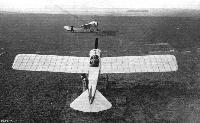 |
Журнал - Flight за 1912 г.
|
| FAMILIAR OBJECTS ON SALISBURY PLAIN. - A couple of the double-seater Bristol monoplanes.
|
 |
P.Lewis - British Aircraft 1809-1914 /Putnam/
|
| James Valentine piloting a Bristol Prier Monoplane.
|
 |
Журнал - Flight за 1912 г.
|
| The single-seater Bristol monoplane making a banked turn at Brooklands, piloted by Pizey. This machine, which is making fine way, is fitted with a 35-h.p. Anzani engine, and has a speed of about 58 m.p.h.
|
 |
C.Barnes - Bristol Aircraft since 1910 /Putnam/
|
| Flying instruction, 1911: Dual on a Prier monoplane at Larkhill.
|
 |
Журнал - Flight за 1913 г.
|
| THE BRISTOL MONOPLANE IN ITALY. - A remarkable photograph of Mr. C. H. Pixton, piloting one of these well-known monoplanes, gliding down to earth at sunset at Mirafiori, near Turin. On the left of the picture can be remarked the rising full moon.
|
 |
Журнал - Flight за 1911 г.
|
| ANCIENT AND MODERN. - Unique photograph of a Bristol monoplane in flight at Salisbury Plain over Stonehenge.
|
 |
Журнал - Flight за 1912 г.
|
| FROM TERRA FIRMA AND FROM ON HIGH. - The "Bristol" aviation schools at Salisbury Plain, with a Bristol two-seater monoplane in flight; and inset is a view of the same scene from a Bristol biplane.
|
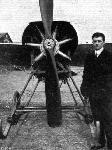 |
Журнал - Flight за 1912 г.
|
| Mr. Arthur, who took his brevet last week at Brooklands at the Bristol school.
|
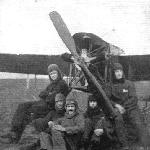 |
Журнал - Flight за 1912 г.
|
| The "Terrible Five," being some prominent aviation men at Salisbury. From left to right: Messrs. England, Barnwell, Lindsay Campbell, Grelg and Sydney Pickles (Australian monoplane pupils), and the machine they fly.
|
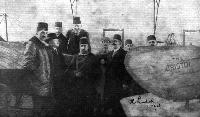 |
Журнал - Flight за 1913 г.
|
| THE BRISTOLS IN TURKEY. - A gathering of several high personages of State after inspection of a couple of Bristols supplied to the Turkish Government.
|
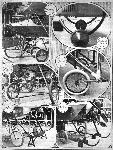 |
Журнал - Flight за 1911 г.
|
| Six types of landing gear at the Paris Aero Salon.
|
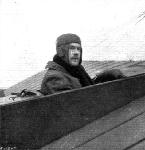 |
Журнал - Flight за 1912 г.
|
| Lieut. Reynolds, R.E., at the pilot's seat on his Bristol two-seater monoplane.
|
 |
J.Herris - Halberstadt Aircraft of WWI. Volume 1: A-types to C.III /Centennial Perspective/ (44)
|
| Student pilot in his Halberstadt-Bristol Coanda trainer.
|
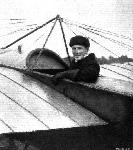 |
Журнал - Flight за 1912 г.
|
| A PROMISING AVIATOR. - Mr. Sydney Pickles, an Australian, on the single-seater Bristol monoplane, which he has been flying at Brooklands. He has also flown the two-seater, of same make, exceedingly well, doing figures of 8 on it, &c. Extremely enthusiastic and the makings of a fine flyer.
|
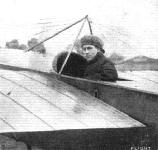 |
Журнал - Flight за 1912 г.
|
| Mr. F. Warren Merriam, the very able manager of the Bristol Co. at Brooklands Aerodrome, just going for a flight to test one of the Bristol monoplanes for Prince Cantacuzene.
|
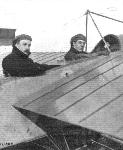 |
Журнал - Flight за 1912 г.
|
| Messrs. Howard Pixton and his pupil, Harold Lane, on the two-seater Gnome-Bristol monoplane, on which they flew on Thursday morning of last week from Brooklands to Salisbury, a distance of over 60 miles in one hour.
|
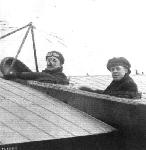 |
Журнал - Flight за 1912 г.
|
| A couple of flying Australians at Lark Hill, Salisbury Plain. - Mr. Vincent P. Taylor (well known in the balloon world as "Captain" Penfold) in front on the two-seater Military Bristol, and on the right Mr. Eric Harrison, one of the Bristol Co.'s instructors.
|
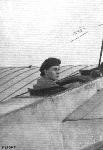 |
Журнал - Flight за 1913 г.
|
| Mr. W. H. S. Garnett, who has just successfully taken his ticket on a 50 h.p. tandem Bristol monoplane at Salisbury Plain.
|
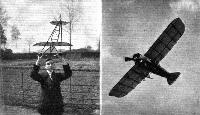 |
Журнал - Flight за 1912 г.
|
| MESSRS. ROLFE BROTHERS' MODELS. - On the left their distinctive type model, and on the right their Bristol type.
|
 |
Журнал - Flight за 1911 г.
|
| MONOPLANES AND BIPLANES IN THE DAILY MAIL CIRCUIT ROUND GREAT BRITAIN. - From these every machine can be readily identified either in flight or on the ground.
|
 |
Журнал - Flight за 1911 г.
|
| Side view of the Bristol two-seater monoplane.
|
 |
Журнал - Flight за 1911 г.
|
| Sketch of the Bristol monoplane illustrating the accommodation in the pilot's cockpit and the arrangement of the auxiliary petrol tank. The wires from the cabane are omitted for the sake of clearness.
|
 |
Журнал - Flight за 1911 г.
|
| Sketch illustrating the flexible front skids of the Bristol monoplane and the method of springing the single axle. To avoid complication in the sketch the wheel is omitted, but its hub indicates its position.
|
 |
C.Barnes - Bristol Aircraft since 1910 /Putnam/
|
| Bristol Prier P-1
|
 |
P.Lewis - British Aircraft 1809-1914 /Putnam/
|
| Bristol Prier P.1
|
 |
Журнал - Flight за 1911 г.
|
| THE BRISTOL MONOPLANE. - Plan and side elevation to scale.
|
























































